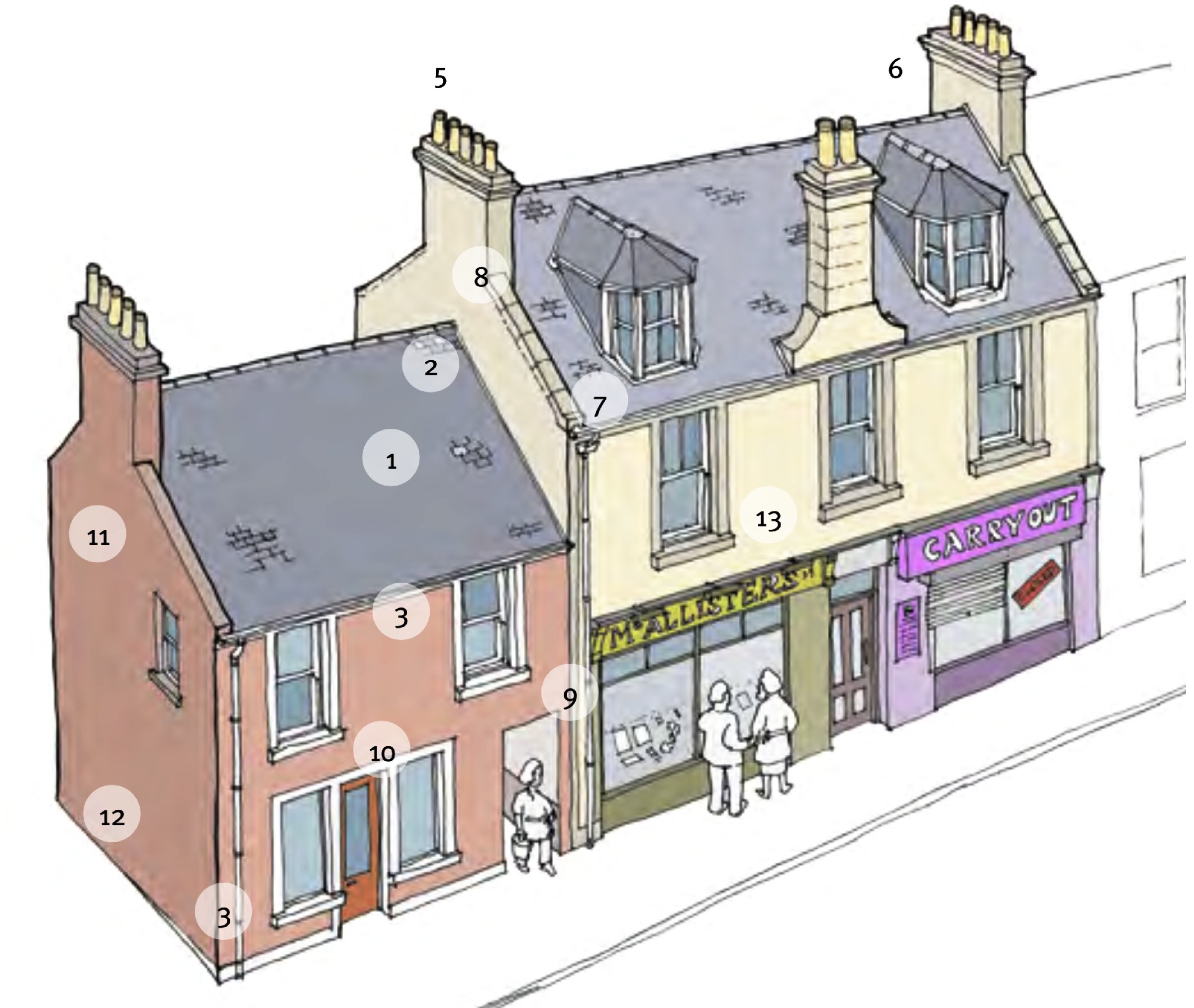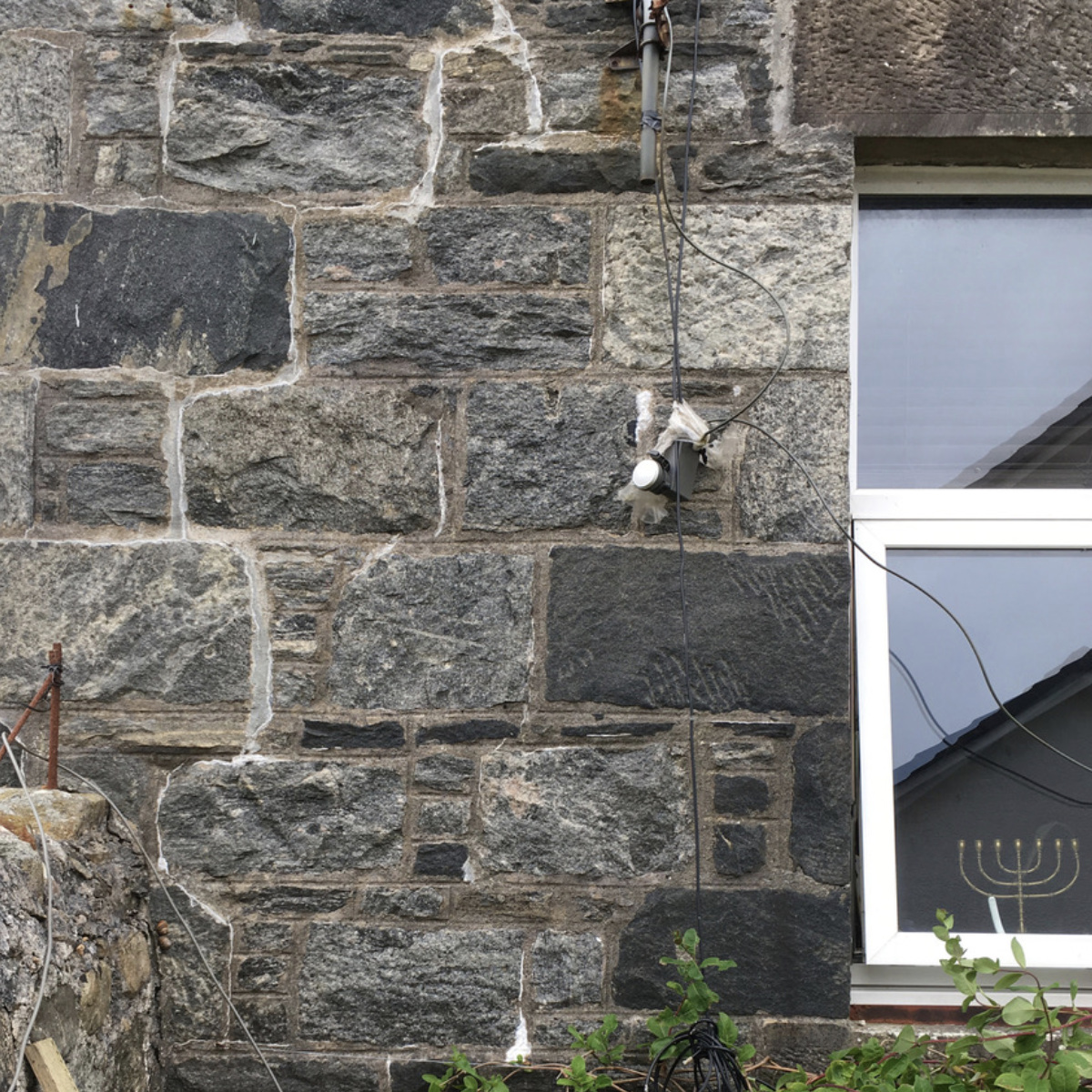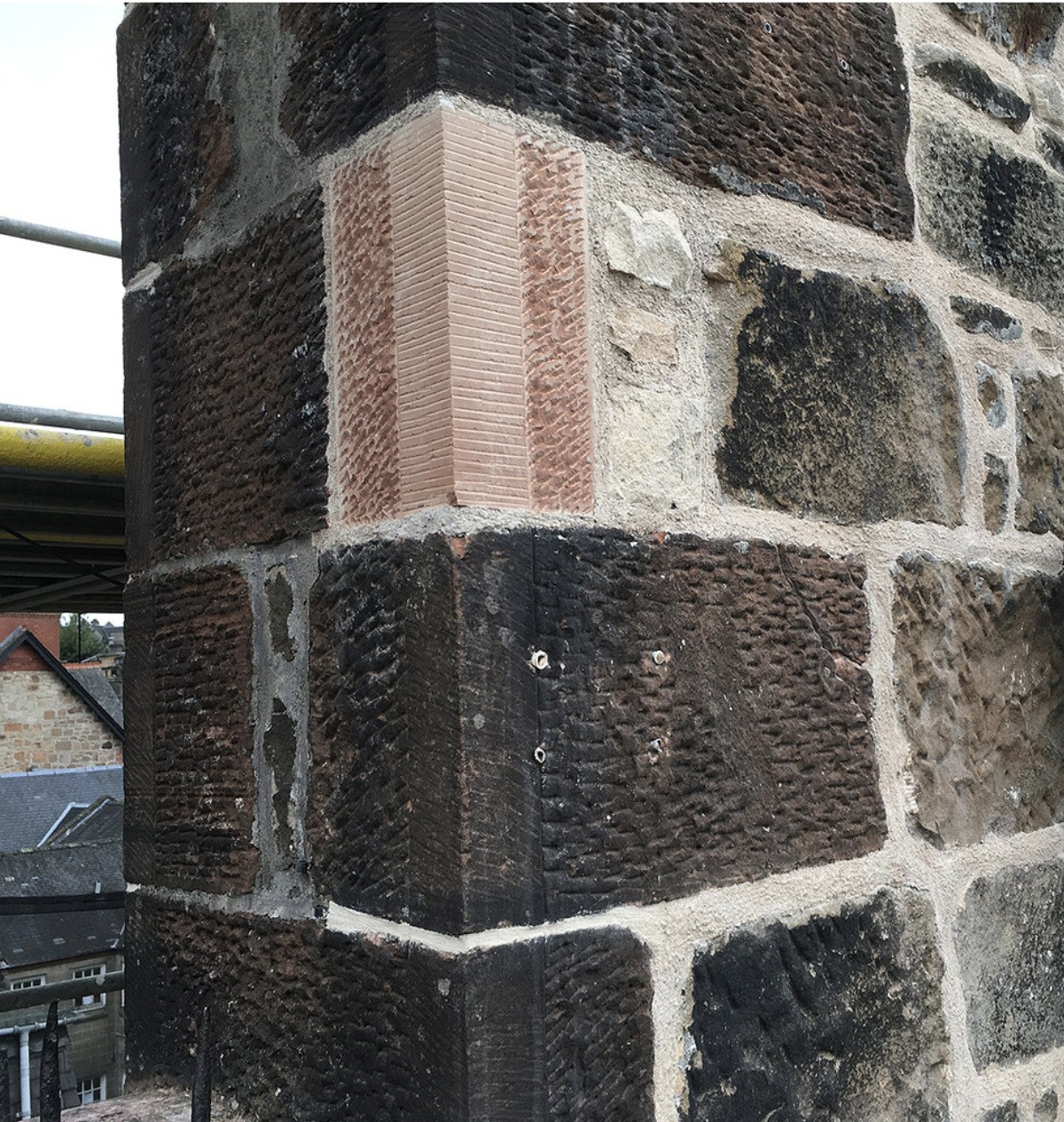- Home
- Scotland's changing climate
- Urban Housing in Scotland
- Maintenance
- Ventilation
- Airtightness
- Insulation
- Lofts - insulation at ceiling level
- Lofts - insulation at rafter level
- Cavity wall insulation
- Solid Walls: Internal vs External Insulation
- Internal Solid Wall Insulation (IWI)
- External Solid Wall Insulation (EWI)
- Timber frame retrofit
- Windows and doors
- Openings in 'historical' buildings
- Openings in 'non-historical' buildings
- Ground floors
- Suspended floors
- Suspended floors - from below
- Suspended floors - from above
- Solid floors
- Insulation materials
- Building science
- Space heating
- Solar energy
- Product Selector
Maintenance: Walls

For external walls, scan carefully across in sections and check:
8. areas of decayed or spalling stonework
9. gaps in the mortar, and if the stonework has had modern cement pointing
10. visible cracks, particularly associated with lintols and windows, and any snaking down the building
11. lintols or courses of stonework not level
12. cracked or loose render
13. previous patch repairs or obvious alterations / improvements should be carefully checked as these often hold clues to problems below
14. items fixed to the wall which can come loose or damage the masonry, like TV aerials, washing line fixings etc.
15. staining of walls from gutters and downpipes, leaking waste pipes, inadequate drips from cills etc.

Traditional pebbledash rendering - effective particularly close to the sea

Cement mortar used to repair stone wall
Lime render: good v Cement render: bad
Traditionally most stone buildings in Scotland would have been rendered (‘harled’) with a lime render with coats of limewash applied regularly for looks and protection. The lime render and limewash are flexible, meaning they were able to absorb the sorts of movements associated with masonry buildings, and also ‘breathable’ so moisture within the walls was able to safely escape. By contrast most cement or cement-rich renders are inflexible and impervious to moisture. This creates a number of problems:
• First, when the underlying masonry moves, the cement render cannot accommodate it and cracks. This crack then allows rainwater to enter the wall.
• Once inside, the impervious nature of the cement means that the water cannot escape and will tend to saturate the wall creating all sorts of mischief, leaching salts and creating spalling when the saturated stonework freezes and expands.
• Timbers like floor joists and lintols within the wall can decay due to the surrounding moisture and in addition, the saturated wall transfers heat much more readily, making homes harder to keep warm.
Uncovered stonework
In late Georgian and Victorian times, a fashion for uncovered stonework emerged so many buildings of that era have a finished stone exterior. We are used to these nowadays and almost universally want to retain them. These facades are not subject to the same problems of cement render, but where they have been cement pointed, the cement mortar causes the same problems, allowing moisture in when cracked, but not letting it out again, leading to the sorts of ‘stone decay’ noted above.
For these reasons, it is usually best that cement renders and pointing are removed from those buildings originally rendered and re-pointed with lime. This is neither easy nor cheap, but not doing so means that any work carried out to improve the energy efficiency of the wall is at risk, along with the wall itself and anything structurally linked to the wall.
‘Modern’ buildings
Buildings built more recently which were designed with cement mortar and renders tend to have movement joints and will not suffer in the same way, although the principles above still apply and care should be taken to ensure that the building’s longevity is assured.

Cement pointing (still visible to the left) has been removed from this stone faced chimney stack and replaced with a lime mix. In addition, a damaged stone has been replaced with a matching natural stone indent.